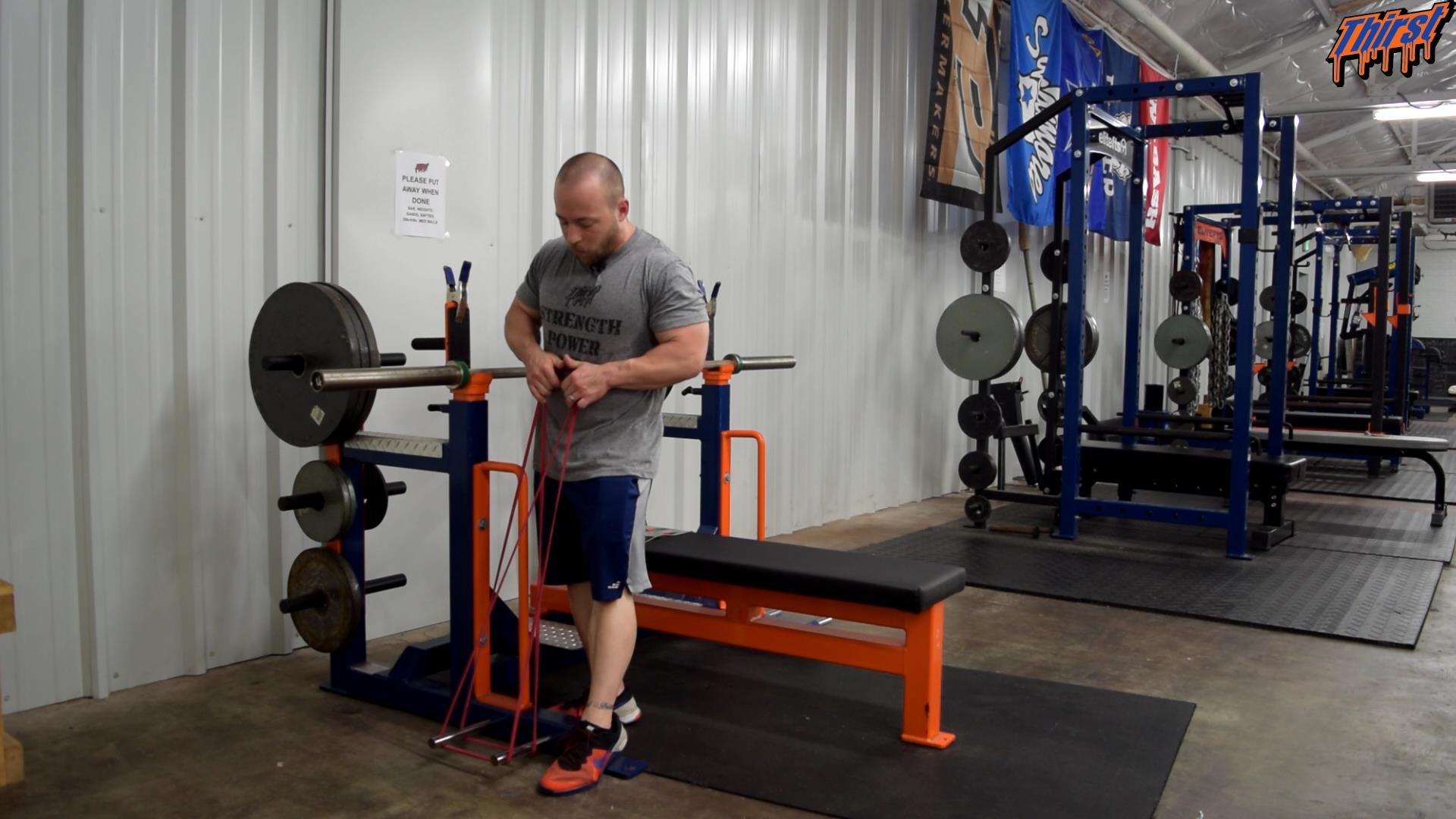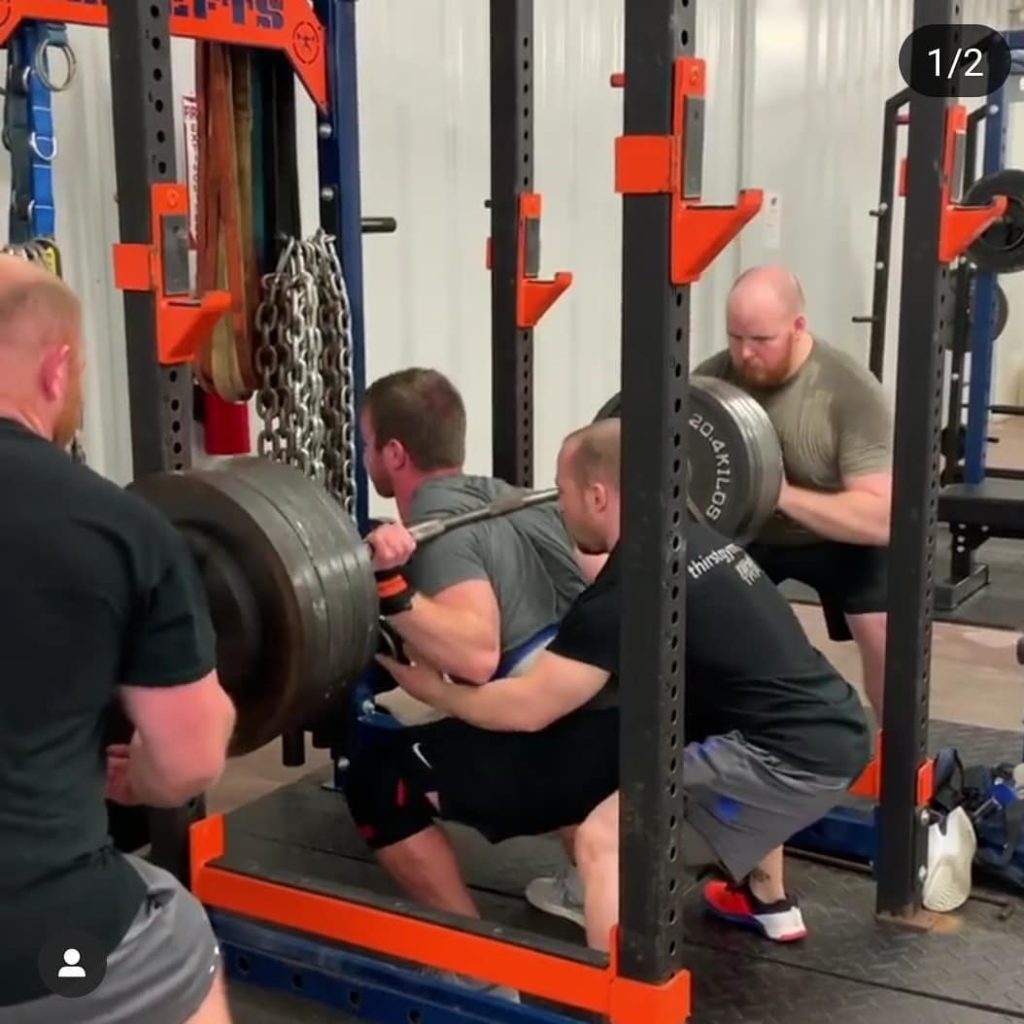How To Set Up Bands For The Bench Press
Using bands is one of the greatest training tools that is likely missing from your training programs. They serve numerous purposes from accessory work, to dynamic effort work, and just overall variety to training to keep things fresh and ever changing for continued progress. Bands have unique properties in the training world when it comes to accommodating resistance. We’ve talked about the use of the chains for the bench press, but bands provide some benefits that chains simply miss out on.
Bands provide a training effect called over-speed eccentrics. In simple terms, the bands force the weights to come down faster than just the pull of gravity alone, which then in-turn provides more kinetic energy that we can use for a concentric muscle contraction (in this case, pressing the weight off our chest). Basically, the bands are always “pulling” down, where chains simply deload into the floor and unload off the floor. Knowing that the bands are pulling down continuously, we know that every inch you press the bar, the most resistance you will encounter as the bands try to pull the weight back down to your chest. This is an amazing, yet cautious aspect of training with bands.
To properly set up your bands for the bench press, you will need to have some way to double up, or choke your bands. This could be with band pegs, or you can use dumbbells that are side by side. The bands will be ran under the pegs/dumbbells with both ends of the band being in your hands. You then pull both ends of the bands up to the sleeve of the barbell, moved all the way to the inside.
By having the bands set up in this fashion, this will ensure that the bands have tension throughout the whole range of motion. The last things you want is for your bands to become a limp noodle when the weight is on your chest. This will not only provide little to no training effect, but will likely make you look like a fool in the gym. I can not urge enough to set your bands up on the bar before you begin to add more weight. This will allow you to warm up properly with the proper accommodating resistance that you need, but also let you make better decisions on weight jumps if it happens to be a heavier training day.
*Warning: the first time you use bands, I would highly recommend you have a spotter. The bands will naturally pull the bar out of the rack to a perpendicular position between the bands and the ground. This could cause the bar to drop on you.*
So what are the negatives?
Well, training with bands can have some pitfalls. The first being that they are hard on your joints when you use them in conjunction with barbells, especially a straight bar for bench pressing. Knowing that the bands are constantly pulling downward, this force is also dissipated in the wrists and elbows. Long term use, especially with poor technique and biomechanics, can wreck havoc on your joints. Phase the use of bands in and out of your training to prevent this from happening. Another minor issue is that bands “ground” you while you are performing the movement. Think of using a Smith Machine (I know, ludicrous right?), and how it locks you into a specific range of motion. It’s difficult to move forward, backward, side to side. Well bands act similarly, which can detrain the stabilizing musculature to some degree. It’s not nearly as bad as a Smith Machine, but is a training effect that can occur with prolonged band usage.
What Will You Need?
You’ll need the following things to set up your bands correctly:
- Band Pegs and/or Pairs of Dumbbells
- Pair of bands (we prefer the ones from Elitefts)
Once you have these, you’re good to go. However, the pair of bands you will need will be based upon your strength level. Ideally, you will have 20-25% of band tension at the top so that you can get the desired training effect. For most people that are bench pressing under 400 pounds, this would be doubled mini bands.
For example, a 300 pound bench presser would want to have 60-75 pounds of band tension on the bar at the top. This can vary a bit based upon set ups and facilities, but usually you’ll find doubled mini bands will get you into this range. If you’re in doubt, I suggest purchasing a digital luggage scale to check your band tension prior to training.
Watch the video below to learn more about setting bands up for the bench press, and how to get the most from them in your training.
Summary
While bands are certainly one of the best training tools you might not be using, but setting them up properly and having the correct tension will be of vital importance to ensure you reap those benefits. We use bands on the bench press to help develop upper body speed and power with our athletes, but also to help teach them how to press as hard and as fast as possible during repetitions. Hopefully this can go on to help you hit a personal record or improve your athletic performance.
Feeling confused? Have questions? Did we blow your mind with something? Let us know in the comments section.









